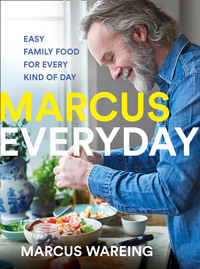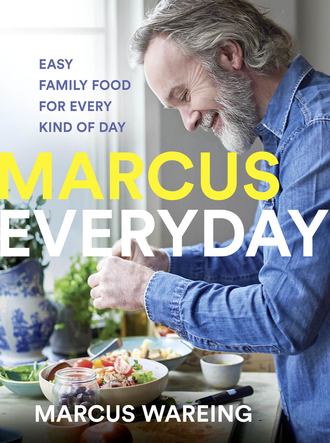
Полная версия
Marcus Everyday: Easy Family Food for Every Kind of Day


Copyright
HarperCollinsPublishers
1 London Bridge Street
London SE1 9GF
www.harpercollins.co.uk
First published by HarperCollinsPublishers 2019
FIRST EDITION
© HarperCollinsPublishers Ltd 2019
Jacket design by James Empringham © HarperCollinsPublishers Ltd 2019
Cover photographs © Susan Bell 2019
A catalogue record of this book is available from the British Library
Marcus Wareing asserts the moral right to be identified as the author of this work
Photography: Susan Bell
Food styling: Becks Wilkinson
Prop styling: Tabitha Hawkins
Find out about HarperCollins and the environment at www.harpercollins.co.uk/green
Source ISBN: 9780008320997
Ebook Edition © October 2019 ISBN: 9780008321000
Version 2019-10-04
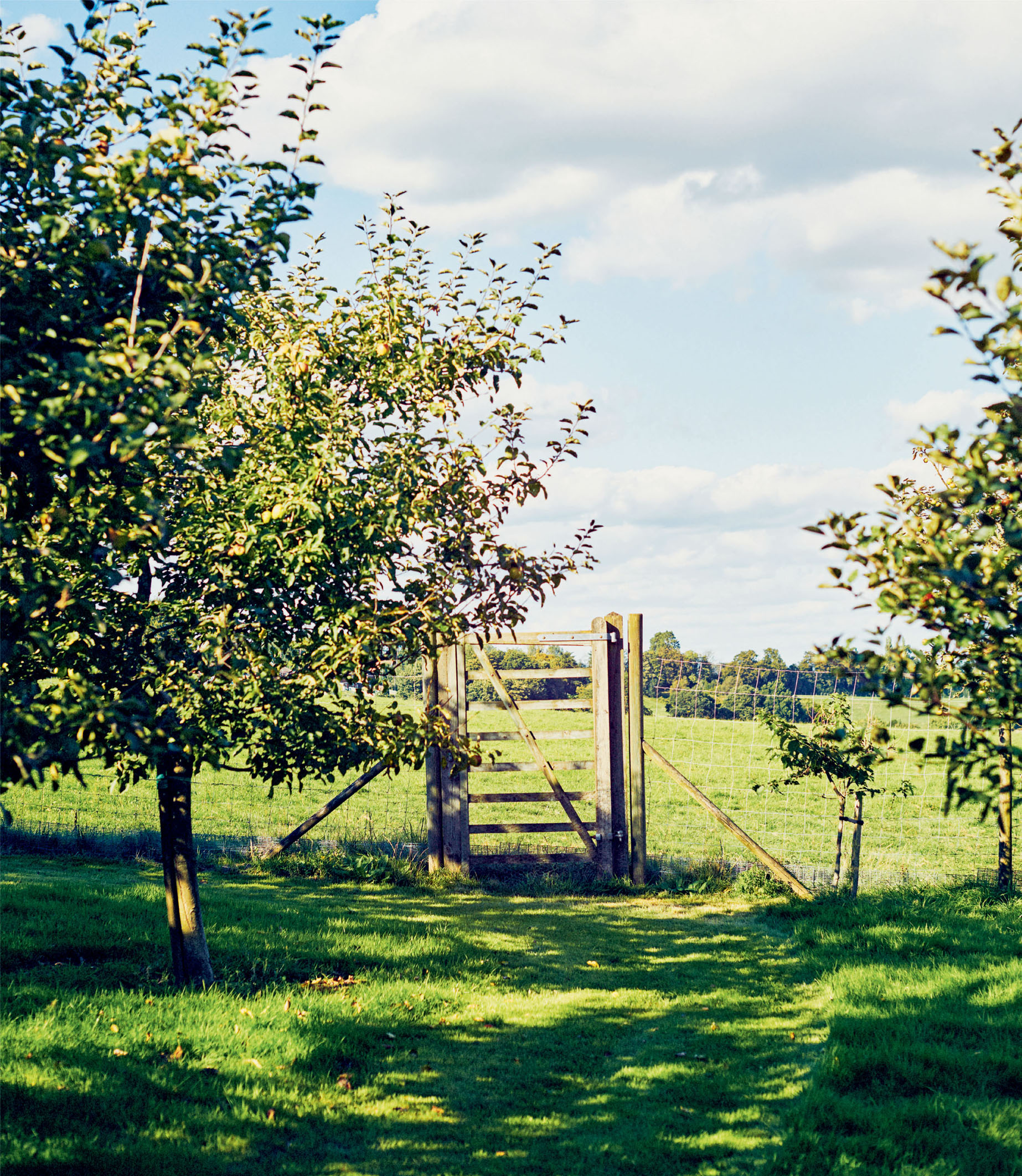
Contents
COVER
TITLE PAGE
COPYRIGHT
INTRODUCTION
1 My Garden Patch
Beetroot, Tahini Verde and Sourdough Salad
Roasted and Pickled Cauliflower Salad with Almonds and Chives
Crispy Courgettes with Goats’ Cheese and Lavender Honey
Tomato, Wild Garlic and Burrata Salad
Chilled Summer Garden Soup with Lemon and Mackerel
Asparagus with Bagna Cáuda and Parmesan
Roasted Jerusalem Artichokes with Prunes, Lentils and Sour Cream
Carrots with Pine Nuts and Tarragon
Parsnip, Rosemary and Horseradish Gratin
Celeriac, Ham Hock and Barley Hot Pot
Poached Rhubarb and Rhubarb Jelly with Bay Leaf Cream and Shortbread
Strawberry and Mint Eton Mess
Gooseberry and Basil Fool
Caramelised Honey-roasted Pears with Mascarpone and Filo
Harvest Preservation
Fermenting – Fennel Kimchi
Pickling – Pickled Cucumbers
Jam-making – Fig Jam
Chutney Making – Apple, Rhubarb and Rosemary Chutney
2 Weekday Suppers
Beetroot, Wasabi, Feta and Pine Nut Salad
Field Mushroom, Walnut and Thyme Filo Pie
Roasted Cauliflower and Walnut Tagliatelle
Chargrilled Mackerel, Pickled Onions and Salsa Verde
Green Chilli Salsa Cod with Roast Potato and Almond Salad
Baked Haddock with Lentils, Basil and Mascarpone
Thai Chicken Salad
Chicken, Leek and Wholegrain Mustard Potato Pie
Chicken, Split Pea and Kale Curry
Hasselback Potatoes with Red Wine and Pork Ragu
Rump Steak with Green Sauce and Beer-braised Onions
Pancetta and Mushroom Pasta Bake
Pork Chops with Green Olives, Baked Orange and Fennel
Beef, Asparagus, Cashew and Miso Stir-fry
Lamb Chops with Minted Orzo and Pea Salad
Lamb Meatballs with Harissa and Sour Cream
3 Waste Not, Want Not
Potato, Thyme and Cheese Croquettes
Carrot Fritters with Pickle Juice Emulsion and Carrot Salad
Homemade Ricotta, Radicchio, Orange and Dill Salad
Panzanella
Leftovers Frittata with Piquant Fruit Chutney
Not-So-Ordinary Tomato Sauce
Pizza Base
Cauliflower and Yellow Split Pea Curry
Fridge Gazpacho
Quick Vegetable Pickle
Fruit Bowl Compote
Winter Warmer Soup
Baked Citrus and Polenta Cake
Sticky Banana Pudding with Rosemary Sauce and Homemade Crème Fraîche
4 Home Alone
Croque Monsieur
Smoked Salmon and Garden Herb Omelette
Chop Chop Salad
Prawn, Tomato and Chilli Linguine
Chicken Schnitzel with Celeriac Remoulade and a Fried Egg
Butter-roasted Cauliflower with Capers and Parsley
Barnsley Chop, Roasted Fennel and Black Olive Tapenade
Sirloin Steak with Brandy Sauce and Crispy Potatoes
Roast Chicken Leg with Tarragon, Cucumber and Cashew Salad
Ultimate Beef Burger
Pear, Blackberry and Walnut Crumble, with Pouring Cream
Caramelised Banana Split
5 In the Fridge
Blueberry Pancakes with Lemon and Honey Strained Yoghurt
English Muffin Pain Perdu with Crispy Bacon, Avocado and Sriracha
Welsh Rarebit
Goats’ Cheese, Kale, Blood Orange and Mustard Salad
Branston Pickle, Onion and Cheddar Omelette
Prawn, Cos, Parmesan and Tahini Salad
Chicken with Seared Lettuce, Soft-boiled Egg and Cornichon Mayonnaise
Pizzas
Chorizo, Rocket and Créme Fraîche Pizza
Hummus, Aubergine and Roasted Pepper Pizza
Ham and Egg Pizza
Roast Chicken Breasts with Fennel Salad and Romesco Sauce
Pea Pesto and Chicken Spaghetti
Smoked Mackerel, Egg and Caper Fish Pie
Beef and Garden Herb Meatballs with Roasted Tomato Sauce
Rhubarb, Ginger and Almond Crumble
Apple and Membrillo Tart
Crêpes with Dulce de Leche Cream and Hot Nutella Sauce
6 Home Baking
Lemon Curd Madeleines
Chocolate and Clementine Crunch Cookies
Hazelnut and Chocolate Choux Rings
Carrot and Parsnip Cakes with Orange Cream Cheese Frosting
Caramelised White Chocolate Brownie
Chocolate and Peanut Caramel Tray Bake
Date, Cardamom and Caramel Slice
Tahini and Caramelised Honey Cake
Blackberry and Buttermilk Cake
Blood Orange Meringue Pie
Rhubarb and Pistachio Frangipane Tart
Garden Focaccia
Green Olive and Fennel Seed Bread
Pumpkin Seed, Cumin and Cheddar Buns
7 Holiday Eats
Salmon Pastry
Easter Slow-cooked Leg of Lamb with Spiced Rub
May Day Spring Salad
Ultimate Veggie Barbecue
Barbecued Lamb Ribs with Chimichurri Sauce
Black Forest Gateau
Festive Season Canapés
Pork and Sage Croquettes
Quick Gin-cured Salmon with Horseradish and Parsnip
Slow-cooked Celeriac with Brie and Thyme
Stuffed Turkey Leg with Turkey Gravy
Marmalade and Earl Grey Tea-glazed Ham
Ultimate Roast Potatoes
Seasonal Sides
Caramelised Cauliflower Cheese
Green Beans with Toasted Hazelnut Butter and Anchovy
Celeriac and Parsnip Boulangère
Spiced Pumpkin Fritters
Quince, Rosemary and Honey Trifle
Mince Pie Puddings with Brandy Cream
Boxing Day Bubble and Squeak Pie
Crackling’d Slow-cooked Pork Shoulder with Baked Apple Sauce
Ham, Membrillo and Gruyère Bakes
8 Weekend Dining
Cured Salmon with Buttermilk, Bergamot and Kohlrabi
Asparagus with Brown Butter Hollandaise, Hazelnut Crumb and Poached Egg
Spice-roasted Quail with Freekeh, Pistachio and Lime Pickle
Confit Duck Ravioli with Cucumber and a Peanut, Sesame and Chilli Dressing
Lemon Sole with Brown Crab, Aioli and Samphire
Whole Roast Monkfish Tail with Mushrooms and Thyme
Parmesan, Oregano and Onion Baked Pumpkin
Aromatic Aubergine with Cashew and Turmeric Sauce
Rack of Lamb with Lamb and Harissa Ragu and Courgette
Lamb Hotpot
’Nduja-stuffed Pork with Smoked Bacon and Red Wine Sauce
Port-braised Feather Blade Steaks with Potato, Onion and Horseradish Gratin
Tarts
Milk Chocolate, Raspberry and Thyme Tart
Fig and Hazelnut Tarts with Smoky Crème Fraîche
Burnt Honey Parfait with White Chocolate and Apricot
Pear and Star Anise Tarte Tatin with Buttermilk Ice Cream
LIST OF SEARCHABLE TERMS
ACKNOWLEDGEMENTS
ABOUT THE PUBLISHER
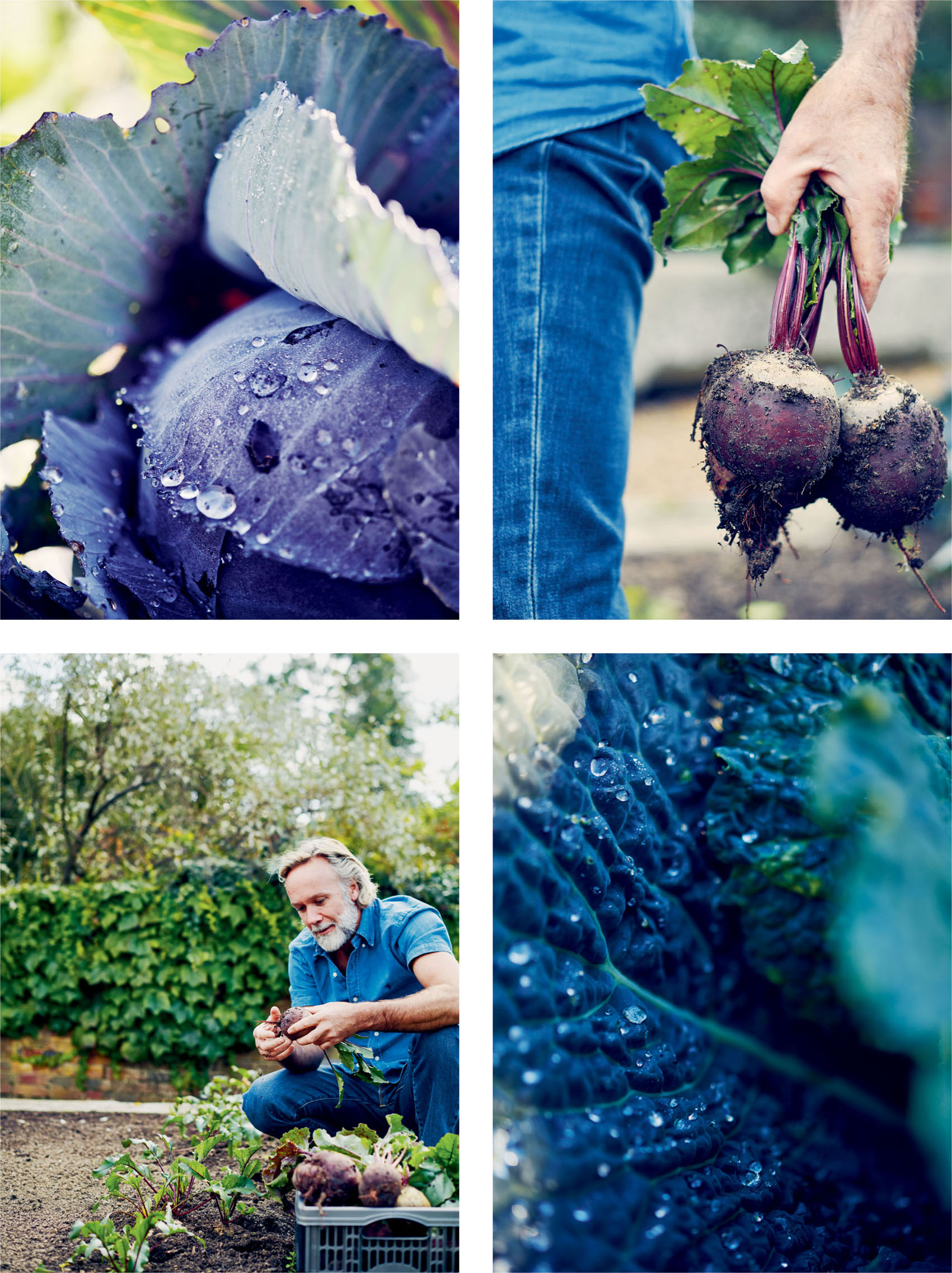
Introduction
Everyday cookery should be just that: something that is achievable on a daily basis and fits in with the busy lives we all lead. This book of recipes for great home cookery will enable anyone to create something delicious and exciting for the whole family, for every occasion.
Each chapter has earned its place in this book and came to mind when I started thinking about how I live my life and how I view food when I’m not being a chef and am in my kitchen at home. It’s about my life outside my work, but the inspiration still comes from being a chef – the two are intertwined. This book is divided into eight chapters, which, from my perspective, cover all the different demands and challenges of everyday cookery and provide a resource for absolutely anyone to create something wonderful in their kitchen. I wanted to explore everything from easy weeknight dinners to ideas for what to eat on holidays, and anything in between.
Home cookery is, and always will be, a way of creating many positive connections through food; from knowing what is in the food on your plate, to minimising what you waste and to the sense of enjoyment gained by knowing that you’ve created something delicious with your own hands.
In the autumn of 2017 I acquired a property in East Sussex called Melfort House, which has given us an opportunity to spend quality time together as a family all year round, away from the hustle and bustle of London. One of the big pluses for me was the farm and arable land that came with the house: there was an overgrown and unused kitchen garden, a small orchard, some beehives and huge potential for more in terms of what they could produce.
For me, 2018 was a year of discovery. What would grow? Where, and how? What would the yield be? After a huge clearout and clean up, small green shoots were celebrated with a sense of anticipation of what they would grow into. Even though I’ve been a chef for more than 30 years, this has been the one part of the process I hadn’t yet experienced; the growing and harvesting of the produce.
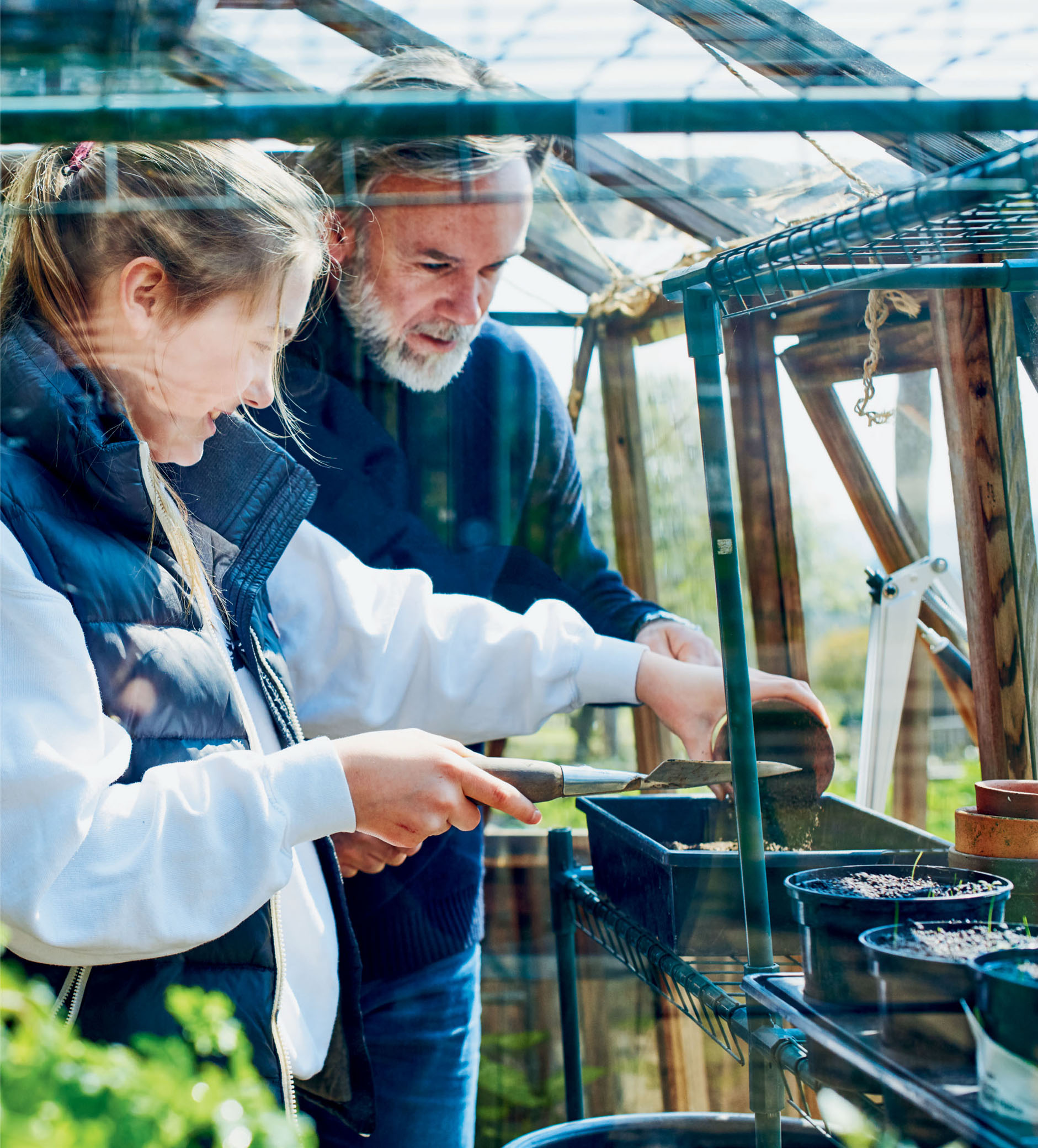
I feel like a child again when I’m there, and the kitchen garden, the bees, the orchard, the apples, the pears … they all inspire me as a chef. We transported numerous boxes of freshly harvested fruit and vegetables, as well as honey from the beehives, in the back of the car into central London, to the chefs in my kitchens. Their excitement was a joy to see. The logistical challenge of growing, harvesting and then getting produce from Sussex to London was a little trial and error, and we learned a lot in the first year. I’m currently creating a pond at the back of the house, around which we’re growing herbs and wild flowers to use in the restaurant. But I have even bigger plans, so watch this space!
I have therefore dedicated a whole chapter to celebrating my first year at Melfort – ‘My Garden Patch’. While you may not have your own garden patch, you can source some great produce from farmers’ markets, community gardens, and even your local supermarket. Or sign up for online vegetable boxes. We sometimes forget to celebrate the humble vegetable, instead spending time sourcing and investing in a great joint of beef or other meat. I implore you to put the same effort into sourcing good-quality garden produce and use this chapter to inspire you. My kids now know the difference in taste between tomatoes grown under the sun, harvested within their rightful season, and the tomatoes from the supermarket – they’re chalk and cheese! But what I’ve also taught them is how to take those everyday tomatoes we all buy and improve their flavour if we need to.
What you will also see scattered throughout the book is a focus on honey as a fantastic ingredient, used in many different ways. Having comb honey from our own bees at Melfort has made me think about this ingredient in a completely different way and about the flowers (in particular the lavender and roses) they pollinate – all of which flavour our honey. This ingredient that I have always taken for granted as a cook suddenly has magical implications now that I’ve witnessed its making.
Running a restaurant kitchen from a young age instilled in me an awareness of waste and resourcefulness; of not wanting to needlessly discard a single thing. The cost of food, how you prepare it and how you eventually sell it, can make or break a restaurant business. The notion of throwing something in the bin that could still be used is sacrilege to me. So, for me, this principle should also be applied at home. After Marcus at Home and New Classics I wanted to write a book that celebrated home cookery and seasonal produce, which would also be a practical guide to creating delicious meals from ingredients that may not have been completely used up, or might otherwise typically be destined for the bin.
We are bombarded with a constant stream of news about environmental issues. The sheer amount of food that we, as a nation, waste on a daily basis is a huge problem. Food gets stacked up in the fridge, then we overbuy – throwing things into our shopping baskets because we think we need it, without necessarily looking in the fridge before we go shopping and planning what we’re buying for. It’s so easy to buy more than we need, be seduced by 2-for-1 deals and so on. We need to start buying only what we’re actually going to eat. Things go off, of course, but having been taught as a young man by my father to appreciate fresh produce, I know how not to take an ingredient for granted as well as how to use it up resourcefully.
The chapter ‘Waste Not, Want Not’ came about originally because of the sheer volume of some of the Melfort produce (tomatoes, for example) that I could not keep up with, and the recipes that I used to avoid throwing anything away. This chapter provides a framework for how to use what you may have a glut of, but also how to breathe new life into that old potato lying at the bottom of your pantry, or that slightly shrivelled orange in your fruit bowl.
I also felt there was a need for a chapter on cooking solo – ‘Home Alone’. Instead of having a cheese sandwich, or ordering a takeout, try these recipes to give yourself a bit of a treat (my favourite is the Sirloin Steak with Brandy Sauce and Crispy Potatoes), and enjoy the silence.
I’ve included handy methods and tips throughout the book for how to cook ingredients the way that I, as a chef, cook them. It’s intuitive for me, but I have realised when cooking at home with my family and friends that there are certain techniques and procedures that transform a dish from being just okay to being great, such as how to cook a steak, how to make perfect mashed potato, and my foolproof method for cooking omelettes. As well as what to do when things don’t quite go to plan …
Everyone thinks chefs make everything from scratch when they cook at home, but I don’t. Like so many, my life doesn’t allow me to do that. Instead, I take basic things, like an average shop-bought mayonnaise, which can be a little bland, and make it better. I’ll enhance it with garlic, or curry seasoning, or a little bit of saffron or herbs – anything, really. Even gherkins or chillies – it’s easy to improve it. I also use stock cubes like salt, as a seasoning, crumbling one over a dish as a flavour enhancer. I still wouldn’t ever mess with baked beans, though (apart from maybe adding a bit of HP Sauce).
I’ve been a cook since I was 14 years old, and ran restaurants as a head chef from the age of 25, so much of my life has been spent in a professional kitchen. This book is about a different style of cooking, and is about me in my everyday life. Some of the recipes will look familiar, but there are little twists, anecdotes, secrets and tips. These are the things that make chefs seem different to everybody else – it might appear that we have a Midas touch, but it’s really just layer upon layer of training.
I hope you enjoy cooking the recipes as much as I enjoyed writing them. As I’ve gone through the process of writing cookbooks, I’ve been fascinated by the journey; moving forward, rethinking, recreating and reinventing new ideas, which is what I do in my professional kitchen. I want this book to be used by everyone, every single day. Spending your time in the kitchen creatively is an integral part of the process of preparing good food – it’s not just about the delicious end result. And these recipes are perfect for that.

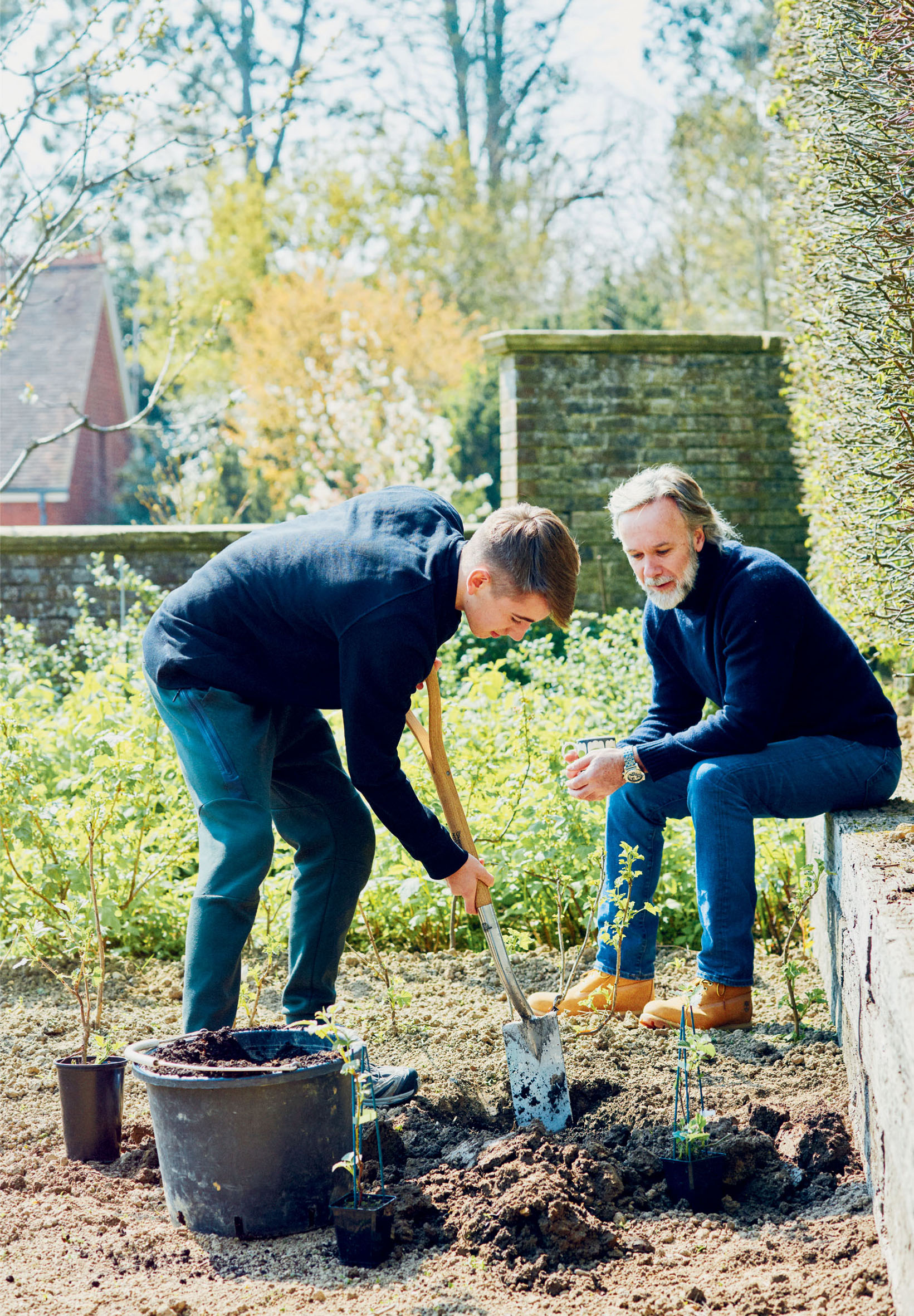
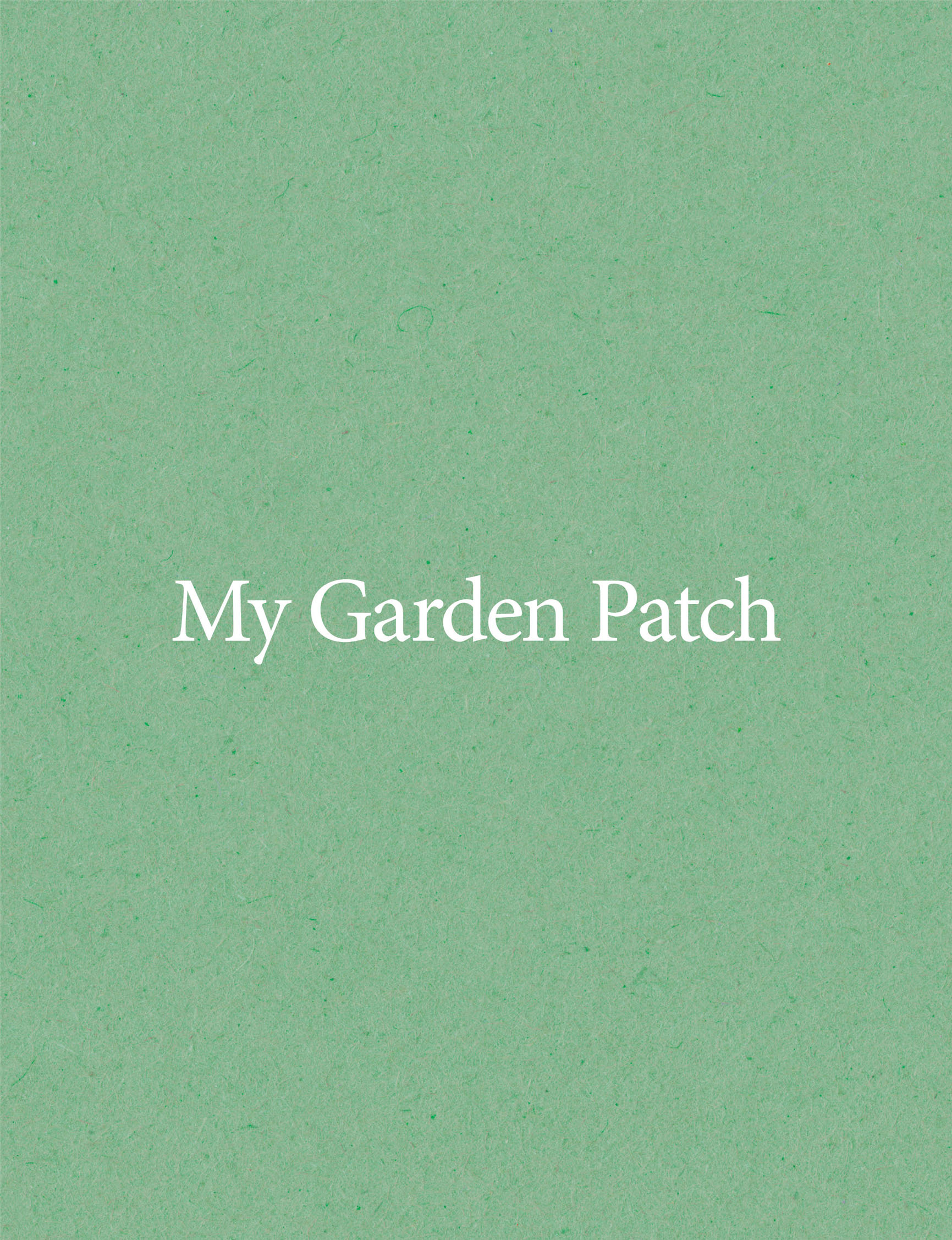
This chapter is all about my new life at Melfort House. I feel like a young boy when I’m there. I’m finding a new sense of understanding and energy from ingredients I’ve never used much before – until now my life has always been about professional kitchens. The photographs in this chapter are also special to me – they were taken at the start of the photoshoot, capturing not just the end of summer but the beginning of this book. We were so blessed on that day, with the sunshine and everything jumping out of the ground; we were pulling up beetroots and cabbages, herbs and celery; it was magical. Just don’t ask me to choose a favourite dish in this chapter, because I can’t!
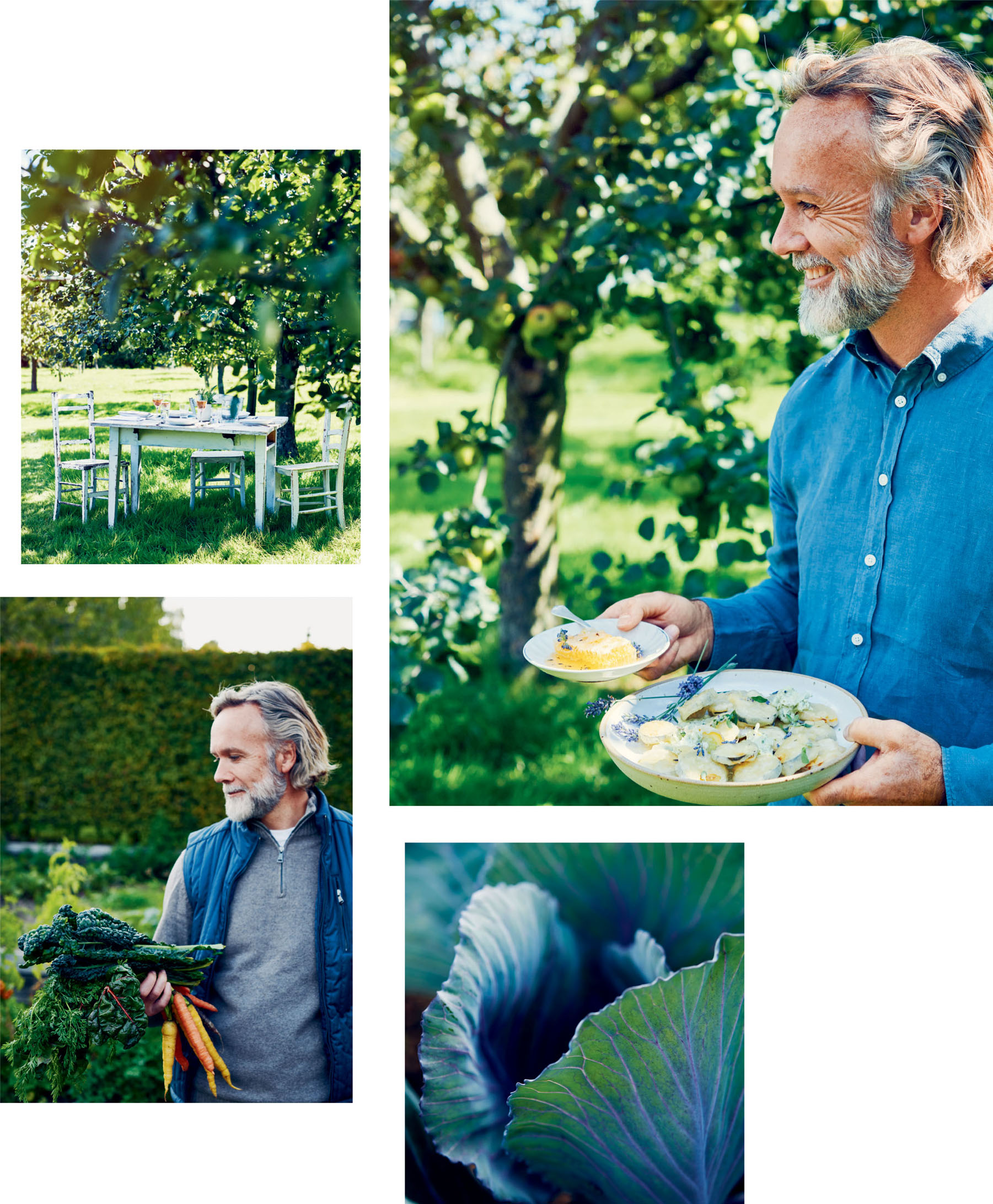
Beetroot, Tahini Verde and Sourdough Salad
Beetroot is so versatile, and it grows very easily. I plant a few different varieties, which gives a great variation of sweetness and colour. Tahini verde is a sesame sauce full of garden herbs. It adds a burst of freshness, flavour and richness to the dish. It will keep for a couple of days in the fridge and is wonderful for salads and with fish. If you can’t find beetroot with leaves intact, use 50g salad leaves instead.
SERVES: 4 | PREP TIME: ABOUT 25 MINUTES | COOKING TIME: ABOUT 1 HOUR, PLUS COOLING
8 large red beetroots, leaves removed, washed and set aside
50ml red wine vinegar, plus 1 tbsp
2 bay leaves
5 cloves
1 tbsp table salt
6 tbsp olive oil
2 candy beetroots, peeled
4 slices of sourdough (about 200g)
sea salt and freshly ground black pepper
FOR THE TAHINI VERDE
100g tahini
2 tbsp chopped tarragon leaves
2 tbsp chopped coriander leaves
2 tbsp chopped mint leaves
2 tbsp chopped basil leaves
½ tsp table salt
1 Put the red beetroots in a saucepan and cover with water. Add the 50ml of red wine vinegar, bay leaves, cloves and the salt. Bring to the boil and cook for about 1 hour, or until just tender. Remove from the heat, drain, leave to cool, then peel and cut each one into 4–6 wedges. Put them in a bowl, drizzle with 1 tablespoon of the olive oil and season with salt and pepper. Set aside.
2 Cut the peeled candy beetroots into 1–2mm-thick rounds, using a mandoline if you have one. Set aside.
3 To make the tahini verde, place all of the ingredients in the bowl of a small food processor, or a beaker for a stick blender, add 50ml cold water and blitz together to form a slightly chunky dressing.
4 Mix 3 tablespoons of the olive oil with the tablespoon of red wine vinegar in a bowl to form a vinaigrette, then set aside.
5 Brush the sourdough with the remaining olive oil and break it into chunky croutons. Season with salt and pepper. Heat a large frying pan over high heat, add the croutons and toast for 3–5 minutes.
6 Dress the beetroot leaves and candy beetroot slices with the vinaigrette.
7 Place the cooked beetroot wedges, dressed leaves and raw candy beetroot slices on a serving dish with the sourdough croutons. Dollop the tahini verde on top and serve.
MARCUS’ TIP:
I use a lot of bay leaves in my cooking, though they have a pungent flavour so one goes a long way. Plant a bay tree (in the garden or in a pot) – they are very hardy and do not take up much space. This will give you everyday access to the leaves.




